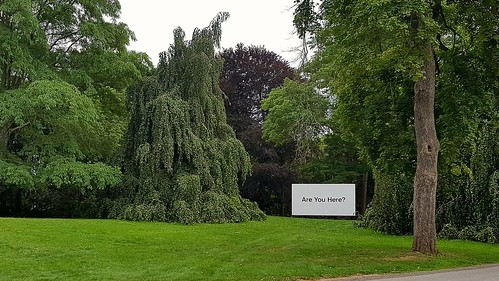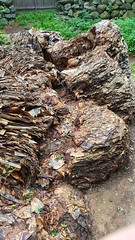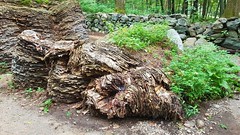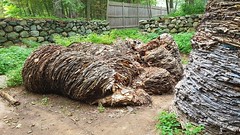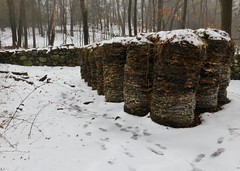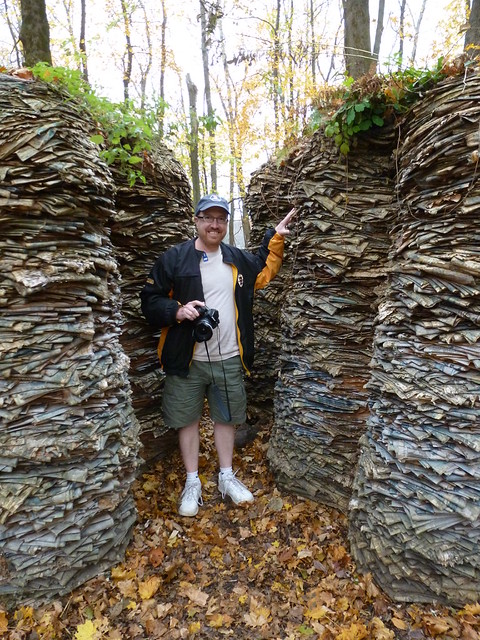There is in our neighborhood a house that has fallen into neglect. Tall weeds and saplings overshadow the grass, vines are clambering up the walls, and a storm-toppled tree spreads an umbrella of roots over the yard and sidewalk. Every time we pass this house, I say to J, “That house is returning to the elements.” In the absence of a diligent caretaker to keep the weeds at bay, even a suburban home quickly succumbs to wildness.
I thought of that house last weekend when Leslee and I visited the DeCordova Sculpture Park and Museum in nearby Lincoln. Every time I am at the DeCordova, I make a point to visit (and photograph) Steven Siegel’s “Big, with Rift,” an installation featuring towering piles of newspapers that are slowly succumbing to decay.
I’ve blogged this installation twice: first in November, 2013, when it was ripening in autumnal glory, and again in January, 2015, when it seemed soggy and dejected beneath a thin layer of wet, sludgy snow. Whereas the other installations at the DeCordova remain more or less the same every time you see them, the compostable nature of newsprint makes Siegel’s piece necessarily temporary.
I last visited “Big, with Rift” in August, 2015, when it was sprouting ferns and flowers. Poison ivy was climbing one side of its craggy mass, and a chipmunk had burrowed a hole into one exposed edge. What started out as art was quickly becoming nature: you could almost feel the surrounding trees welcoming this looming paper pile back into the fold as one of their own.
Given what I’d seen two years ago, I wasn’t hugely surprised last Saturday to see the latest stage in decomposition. “Big, with Rift” has fallen, its newspaper columns collapsing upon themselves while greenery still sprouts from their toppled tops. Like a neglected house, “Big, with Rift” is returning to the elements, its organic innards returning to the soil and nourishing the next generation of decomposers.
How the mighty have fallen, you might say, or you might draw droll conclusions about Fake News and the “failing New York Times.” There is something sad about a broken statue or toppled tower, but there’s nothing more natural than yesterday’s news becoming the subject of today’s decay.
